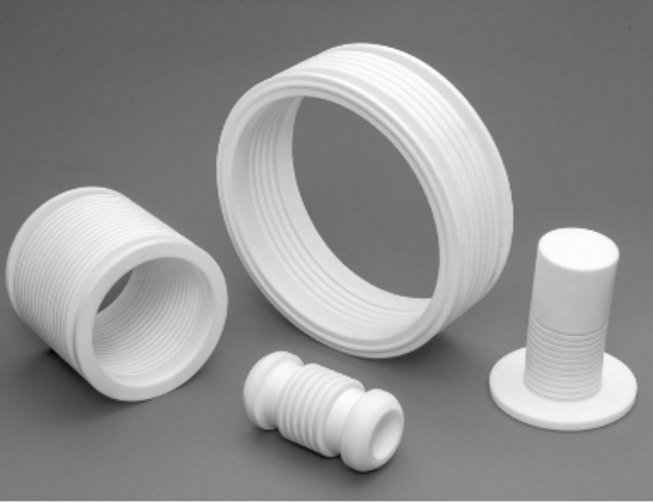Expansion joints in piping systems are often bellowed. PTFE Bellows are a common recommendation for piping systems in homes from experienced industrial engineers and specialists. However, the importance of bellows in a piping system may be lost on someone who is not technologically literate.
These bellows serve as a connecting mechanism between pipes and are utilized in piping systems that may transport high-temperature, high-pressure fluids. A piping system can be affected by several stress-inducing causes.
The bellows built to withstand such influences and allow a piping system to enlarge. Since the function of bellows in the plumbing system is not common knowledge, this article seeks to educate its readers. This article explains why bellows are so useful in piping systems and which bellows are best suited to these applications.
Bellows And Their Importance In The Plumbing
There are several ways in which bellows protect such piping systems from external and internal stresses.
Bellows reinforce the pipe system at potential weak points. The weakest links in a pipe system are at the elbows, connections, and bends. Explosions are common in these areas because of the constant pressure changes within a plumbing system. A few of such situations can easily seen in any of the top firms dealing as important valve manufacturer in china.
As a result, bellows placed to keep pressure constant and protect the connections.
Pipelines protected from vibrations, impact, fluid thudding, and other sudden forms of damage bellows. They serve to dampen the piping system’s mechanical vibrations and shocks.
In plumbing systems, mechanical components are protected from unexpected movement, axial displacement, angular deflection, and misalignment by means of bellows.
Consequences Of Stress On The Plumbing
The importance of PTFE bellows in a piping system can be better grasped with knowledge of the various influences exerted on such a system. The guidelines below will assist you in doing so.
- Substantial internal fluid pressure: the pipe system frequently transports fluid at substantial internal pressure. As the fluid temperature rises, the pressure within the pipe increases. The fluid is directly pressuring the inner walls of the pipeline. The system could damaged by fractures, bursts, or even a complete explosion due to the pressure.
- The assembly’s weight places strain on the pipe’s support structure. Piping systems are also subject to external loads from components, including couplings, bearings, process controllers, flow control transmitters, and temperature and pressure measurement equipment.
- Manufacturing constraints result in non-seamless piping systems, which can restrict movement. The channels and parts that hold the system together also limit its mobility. When these restraints installed, they can potentially hinder fluid flow, leading to back pressure inside the piping system.
- Compressed fluids tend to expand when their temperature rises thermally. As the fluid travels through a pipe, it picks up heat. High pressure applied to the piping system due to thermal expansion caused by friction between fluid layers and the pipe walls.
Bellows incorporated into this system now that the effects of stress on the piping have been explored.
Key Movements Of The PTFE Bellows During Applications
1. Rotation At An Angle
To achieve this angular motion, one end of the bellow rotated with respect to the other, with the axis of rotation being located at the bellow’s midway and perpendicular to the longitudinal axis. Pipe system expansion typically regulated by a pair of flexible bellows, though a twin bellows unit or several pinned restricted flexible bellows may also utilized.
With some forethought, the bellows’ angular capacity can used to absorb substantial motion. In particular, 2-pin or 3-pin configurations of pinned units allow for angular rotation control of pipe development in two dimensions.
2. Lateral Movement
Movement perpendicular to the longitudinal axis of the bellows constitutes lateral motion; in this case, the bellows sheared with one end offset from the other. But the ends of the bellows typically remain parallel to one another.
When the flow parameters of the system necessitate the use of an inner sleeve, a single bellow Expansion Joint acting with a shearing action can accept only a small amount of lateral movement. More extensive sideways motion typically achieved by employing a pair of bellows connected by a pipe in the middle.
The lateral motion of the flexible bellows replaced by a rotation of the bellows in the opposite direction.
3. Universal Movement
Universal expansion joints , or universal Flexible Bellows, designed and manufactured to simultaneously absorb axial, lateral, and angular movements. Such systems typically necessitate great adaptability in order to withstand numerous simultaneous motions.
However, concerns for the bellows’ stability usually result in a lower pressure-containing capacity.
Conclusion
If you want to employ PTFE Bellows in your piping system for the aforementioned reasons, it’s crucial that you choose the right kind of bellows.
Typical bellow materials include rubber, Teflon, and metal. The bellows chosen are dependent on the job at hand. If you’re looking for high-quality bellows, whether for your pond filtration system or hot water pipe lines,
the online market place is full of options.




